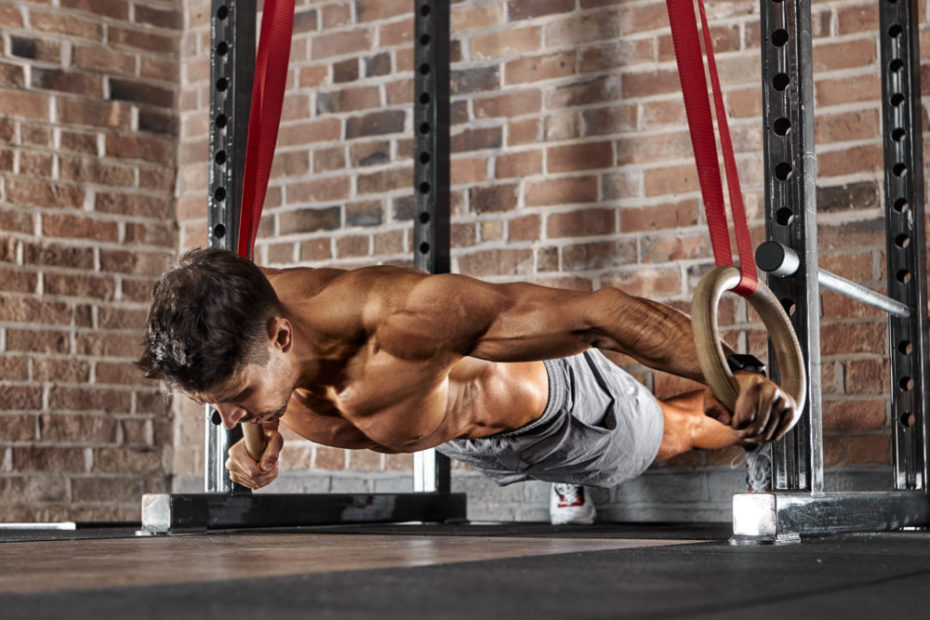The following is an excerpt from Ultimate Abs by Gareth Sapstead, available now via Human Kinetics, Amazon and all good book stores.
If an exercise does not feel right to you, then you need to know how to adapt it or whether an alternative exercise might work better. Even when you know your technique is correct, you may still experience pain or discomfort, or the exercise just might be too difficult or heavy for you. Understanding the simple laws of exercise progression (making it harder) and regression (making it easier) will allow you to structure the most effective training approach, not just for your abdominals but for the rest of your body as well. Understanding how to progress or regress an exercise will also give you a deeper understanding of the programs in part III. You’ll be able to customize these programs according to your body structure, training background, and injury history. Knowing how to progress and regress exercises will also enhance your training experience and confidence to keep your motivation at an all-time high. Five key variables influence exercise progression and regression.
Resistance (intensity)
To make an exercise more difficult, you can apply more resistance. To make an exercise easier, you can use less resistance. Resistance change can come in many formats from changing the weight of a dumbbell or the weight on a cable stack to more complex methods such as altering your body position and other leverage factors. It might sound obvious, but making small changes in resistance can have a huge impact on how an exercise feels and the benefits you receive from it. If the resistance is too high, then your attention might shift away from technique and feeling it where you should, to an externally driven goal like how much weight you’re lifting or the number of reps you’re able to achieve with poor form. Using a resistance that is too low will not elicit a strong enough signal for your muscles to adapt to and get stronger from. Progressing resistance is important, but for the goal of aesthetics it should not be at the expense of losing muscular tension or performing reps without focus. Finding the right balance in the resistance you use is important.
The basic abdominal crunch is an example of where many fail to effectively work their abdominals due to poor abdominal awareness, and using too much weight and momentum. Many would get more out of their crunches by simply going a little lighter, a little slower, and focusing on tension in the intended area.
Range of motion
Each exercise you do has a maximum available range of motion. We could go one step further by stating that each exercise has a maximum available pain-free range of motion. That is, just because you see an exercise done in a certain way and with a certain range of motion, it does not mean that you should also be fitting yourself into that same mold—especially if despite having the range of motion available, the position causes pain or discomfort. A barbell deadlift is a good example. You might think you need to deadlift from the floor because it’s what’s accepted as being the correct full range of motion. But, if your natural body structure isn’t built for it or you have a history of back pain, deadlifting directly off the floor could do you more harm than good. More back or hip pain might cause you to think that your core is weak, when in reality all you needed to do was accept that deadlifting from the floor wasn’t a good fit to start off with. Next time, you might try deadlifting one or two inches (2-5 cm) off the floor to see whether it makes a difference (reduced range of motion), and then throw some extra core work on top for good measure. Increasing or decreasing range of motion can make exercises harder or easier as well as prevent pain. There are also strength and aesthetic benefits from spending more time in certain ranges of motion, so don’t always consider less range of motion to be easier and therefore less effective. When viewing the exercises in part II of Ultimate Abs, these are shown using a full range of motion, but don’t be afraid to reduce your range of motion if you need to for any reason.
Ab wheel rollout need not require complicated regressions and progressions. Simply use a wall to modify your range of motion and then progress from there as your strength improves.
Stability
A typical path of progression often spoken about is from stable to unstable exercises. However, stating that something unstable is a progression of a more stable version and therefore a goal to aim for is inaccurate. While increasing instability does make many exercises more difficult, the question is whether the progression is making the exercise harder in the right way and according to your goals. Use of unstable exercises and adding instability can reduce an exercise’s ability to target a muscle. With increased stability, you can achieve higher targeted-muscle output. So, although adding instability could be seen as a way to add progression to an exercise, you need to first consider whether that is the path of progression you should take. In the context of physique enhancement and aesthetics, progressing from a stable to unstable environment is rarely useful.
Speed
Advancing slower repetitions to faster ones isn’t a progression pathway employed in this book. Faster and more explosive repetitions are usually reserved for performance-based training and enhanced athleticism. For your abdominals to receive the right signals to get stronger and build new muscle tissue, they need to be subjected to high levels of mechanical tension. This requires placing high force through the muscle tissues for longer durations than those used in power-based exercises. When repetition speed is high, it is usually at the expense of placing higher force through these tissues for periods long enough to elicit the adaptation you want. Higher repetition speeds can also take you out of optimal alignment, keeping you from getting the most from each repetition and potentially increasing the likelihood of excessive wear and tear or injury. The higher the repetition speed, the better your muscles have to be at absorbing the resistances you use as well. While increasing repetition speed can be seen as a progression, it is best reserved for when your goal shifts to performance after achieving your primary goal of aesthetics. If you are new to an exercise, it makes sense to be more cautious with repetition speed as you’re learning the exercise. Even once you’re past the learning stage, you should use a repetition speed that still allows you to feel the exercise working the target area.
Body Position
Changing body position is a method of progression that largely works through the manipulation of the lever arm length. Changing leverage factors can change how much resistance you receive as a percentage of your body weight. A simple example is to use a basic front plank performed on your knees versus on your toes. Because the lever arm is longer when you’re on your toes, it is a more difficult position to hold and requires your muscles to work harder. In this case, you would select the plank variation that best fits your current level of strength. Another example is performing a basic crunch. Having your arms straight and overhead is harder than having your arms by your sides. This again is an example of a simple change in lever length that adjusts the difficulty of the exercise based on changing the arm position alone. Here, the weight of your arms taken farther overhead increases the difficulty of the crunch. Exercise biomechanics can be a complex topic, but having a few go-to tricks to make an exercise easier or harder by changing your body position can serve you well. Changing body position to manipulate leverage factors is a continuing theme in part III. It’s also worth noting that a change in placement of an external weight, for example a dumbbell or kettlebell, can change the difficulty of an exercise.
World-class coaching to look great naked! CLICK HERE to find out more.

I build Olympians, Cover Models and those who want to look like them. Author or “Ultimate Abs” available in all good book stores.
